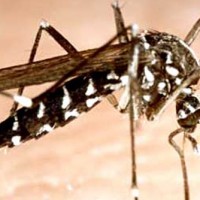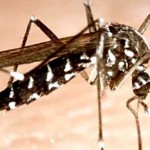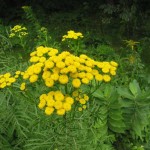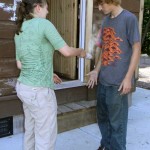What to do About West Nile Virus? A non-toxic pesticide free natural solution

West Nile Virus
There’s a big hoopla about West Nile Virus right now and I wonder what is really behind it. So few peoplehave ever contracted it, and very few have died from it.
In fact, you stand more chance of dying by falling off a donkey.
It is hardly a reason to go spraying millions of gallons of poison across the landscape, in the hopes of killing off the mosquito population. So why aren’t they out there spraying for donkeys? It’s just as ridiculous.
- Tiger mosquito
- Tansy
- Smudging using dried mugwort, one of the nine sacred herbs
Rather than poisoning the area for the rest of its inhabitants (including bees), a less toxic approach to the problem is to make ourselves less desirable to the mosquitos.
When I’m out in nature, I resort to a number of tricks to keep those flying critters at bay.
I’ve had some success using plants extracts, like marigold and catnip.
On a trip to Maine, I found the woods to be full of mushrooms (which I didn’t eat) and mosquitos (which did eat me). I had noticed that the fields around there were covered in Tansy plants. That evening, I crushed some tansy leaves and flowers and slowly sautéed them in some coconut oil, for about 3 hours then drained off the resultant oil. The following morning, I lathered myself with this makeshift repellent and went back to the woods. I was delighted with how effective it was.
I’ve experimented with various herbs for smudging, where a bundle of dried herbs is burned and the smoke used to drive out everything from insects to evil spirits.
It is usually accompanied by a ritual or prayer performed while the smudge stick is being waved around a room or a person. White sage is the most popular herb to use, but in the east I generally use dried mugwort which smolders well and deters them skeeters. I’ve often added strips of cedar bark or lavender for a different aroma. In either case, it works pretty well.
When I’m camping, I often build a fire, even on a hot day, as wood smoke is very effective.
The smokier you smell the less the mozies like you. After a couple of days without bathing, nothing (or nobody) wants to be near you. Sometimes, when the little critters are particularly bad, wiping mud on your skin helps, but it is not too comfortable, and tends to scare the guests at garden parties.
There’s a few don’ts with biting insects. Don’t wear perfume. Don’t wear bright colored clothes and don’t breath. That last one is a toughy, but carbon dioxide is like a magnet to those little buggers. However, chewing on garlic helps. They don’t like garlic, so eat it regularly when you are in the woods. Besides, it helps boost your immune system. I like to gather and pickle field garlic bulbs. They make a tasty bug repellent snack.
As Tony Isaacs points out in his recent article on the Natural News Website,
* 1/2 ounce citronella oil
* 1/4 ounce lavender oil
* 1/8 ounce pennyroyal oil
* 1/8 ounce tea tree oil
* 1/8 ounce jojoba oil
I’ve used a very similar repellent and found it to be a pleasant and effective alternative to the chemical sprays on the market.
Of course, one of the best protections against diseases, is a healthy immune system. This requires eating fresh nutritious foods and drinking teas made from immunity-boosting herbs, such as echinacea, elderberry (and flowers), astragalus, goldenseal, oregano and heal-all. You can buy these as ready made dried teas or gather and dry your own.
However, since your chances of dying from West Nile disease is about 7,500,000 to 1, I wouldn’t go getting bent out of shape about it. The bottom line is, you should be careful when riding a donkey and always take what the media is feeding you with a pinch of salt (preferably sea salt!)




Comments
Powered by Facebook Comments